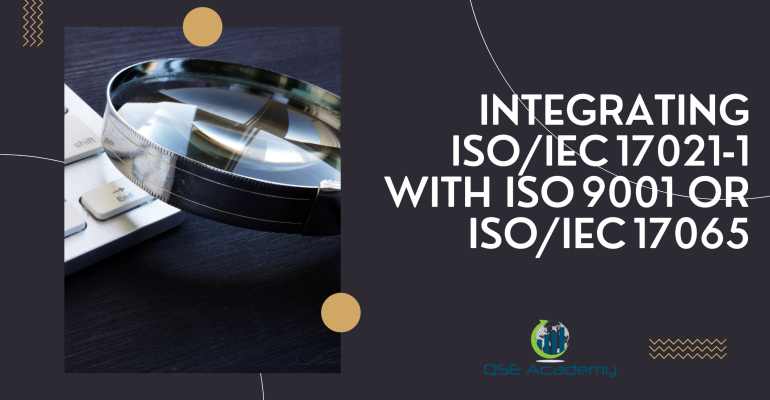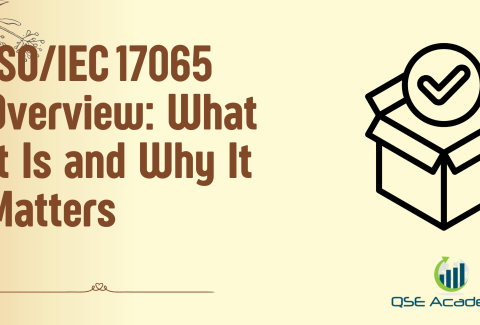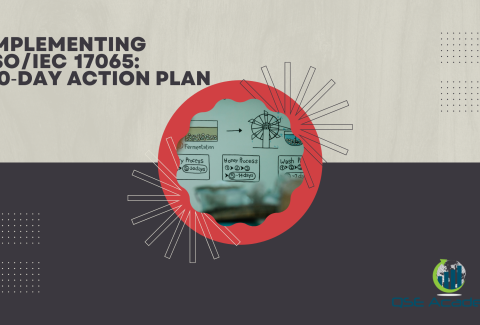Integrating ISO/IEC 17021‑1 with ISO 9001 or ISO/IEC 17065
Last Updated on October 29, 2025 by Melissa Lazaro
Why Integration Matters for Certification Bodies
If you’re running a certification body that manages multiple schemes, you’ve probably felt the pain of duplicate documents, overlapping audits, and endless reviews.
In my experience working with CBs aiming for both ISO/IEC 17021-1 and ISO 9001 (or ISO/IEC 17065) compliance, integration is always the game-changer.
The truth is, most of these standards share the same DNA: management commitment, competence, impartiality, and continual improvement.
So instead of juggling multiple systems, why not build one solid framework that meets all requirements at once?
This guide will walk you through how to merge your ISO/IEC 17021-1 system with ISO 9001 or ISO/IEC 17065 — step by step.
You’ll learn where they overlap, how to document integration effectively, and what assessors actually look for when reviewing combined systems.
Understanding the Relationship Between the Standards
Let’s start with the basics.
Each of these standards serves a different purpose — but they all share the same logic:
- ISO/IEC 17021-1: Sets requirements for bodies certifying management systems (like ISO 9001, 14001, or 45001).
- ISO 9001: Focuses on quality management within an organization.
- ISO/IEC 17065: Governs bodies certifying products, processes, or services.
Here’s what I’ve noticed in practice:
When certification bodies maintain separate procedures for each, teams waste time managing redundant forms and inconsistent reviews.
But when they integrate them into one cohesive system, they save hours — and drastically reduce audit fatigue.
Pro tip: Start by mapping where the standards align. For example, all three require internal audits, management reviews, document control, and impartiality management. Once you see those overlaps, integration becomes much simpler.
Pitfall: Assuming “shared” automatically means “identical.” ISO 9001 drives internal performance; ISO/IEC 17021-1 and 17065 drive certification integrity. You’ll need to align intent, not just structure.
Integration works best when you identify shared foundations.
Let’s look at where these standards naturally intersect:
| Core Topic | ISO/IEC 17021-1 | ISO 9001 | ISO/IEC 17065 |
|---|---|---|---|
| Leadership & Commitment | Clause 5 | Clause 5 | Clause 4.2 |
| Competence & Resources | Clause 6 | Clause 7.1–7.2 | Clause 6 |
| Process Control | Clause 7 | Clause 8 | Clause 7 |
| Improvement & Corrective Actions | Clause 10 | Clause 10 | Clause 8.6 |
You’ll notice the same rhythm: plan → implement → review → improve.
That’s your signal to design one management system that covers all clauses.
Pro tip: Build an “Integration Matrix” — a simple spreadsheet that shows how your documented procedures meet multiple clauses across the standards. It’s a lifesaver during accreditation visits.
Common mistake: Creating three different manuals just to “show separation.” Assessors prefer a clear, unified structure with cross-references — not repetition.
Designing an Integrated Management System Framework
Here’s how you can merge your systems without chaos:
- Define a unified policy.
One quality or impartiality policy can reference compliance with all applicable standards. - Align document control.
Create a single procedure for document management, with tags or references (e.g., “This procedure covers ISO/IEC 17021-1 Clause 8.3 and ISO 9001 Clause 7.5”). - Combine internal audits.
Use one checklist that addresses each standard’s clauses — it saves time and gives a full system picture. - Integrate management reviews.
Discuss both internal performance (ISO 9001) and certification impartiality and competence (ISO/IEC 17021-1 or 17065) in one meeting.
Pro tip: Use templates with multi-standard columns, such as “Clause Reference” and “Standard.” It helps teams track compliance for each scheme while maintaining one workflow.
I once helped a CB integrate ISO 17021-1 and ISO 9001 into a single management manual. They cut audit-preparation time by 30 % and avoided repeated document updates across two systems.
Managing Impartiality and Objectivity Across Standards
If there’s one thing that can derail an integrated system, it’s poor impartiality control.
ISO/IEC 17021-1 and 17065 both emphasize independence — no conflicts of interest, no bias in decisions.
When integrating, make sure impartiality is handled once, centrally.
Here’s how:
- Maintain a single impartiality policy and risk register.
- Use one impartiality committee that oversees all certification schemes.
- Document decisions with references to the specific scheme affected.
Pro tip: During committee meetings, dedicate agenda sections to each accreditation scope. This keeps focus while still using one oversight body.
Pitfall: Running separate impartiality reviews for each standard — it’s redundant and confusing for assessors.
Integrating Audit, Certification, and Decision-Making Processes
This is where you’ll feel the real efficiency gains.
When done right, one well-defined audit process can serve both ISO/IEC 17021-1 and ISO 9001 — or even ISO 17065.
Here’s the workflow I typically recommend:
- Planning: Combine audit scheduling tools for all schemes.
- Execution: Use unified audit plans and checklists with scheme identifiers.
- Reporting: Create one report format that captures scheme details.
- Decision-Making: Centralize decisions under a single certification decision panel.
Pro tip: Standardize forms (like audit plans and nonconformity reports) across schemes. You’ll save time training auditors and ensure consistent language in findings.
A client I worked with integrated their audit management for QMS and product certifications. The result? 25 % faster audit reporting and zero confusion during accreditation witness audits.
Documenting and Demonstrating Integration for Accreditation Bodies
Integration only counts if you can prove it works.
During assessments, accreditation bodies want to see clear, traceable evidence that your system functions as one.
Here’s what to prepare:
- A single management-system manual referencing all applicable standards.
- A clause cross-reference matrix (showing how one procedure satisfies multiple standards).
- Records from combined management reviews and internal audits.
Pro tip: Keep a short “Integration Overview” document — one page that summarizes how the standards connect in your system. Assessors appreciate the clarity and it sets a professional tone from the start.
Pitfall: Having integrated procedures but separate evidence. If you’ve merged systems, your records should reflect that unity.
FAQs – Integrating ISO/IEC 17021-1 with ISO 9001 or ISO/IEC 17065
Q1. Is integration mandatory for certification bodies?
No — but it’s highly practical. Integration helps you reduce documentation, streamline audits, and improve assessor confidence.
Q2. Can we conduct one internal audit for both standards?
Yes, absolutely. As long as your audit plan covers the relevant clauses for each, assessors will accept it as valid evidence.
Q3. Will integration complicate our accreditation assessment?
Not at all. In fact, most assessors prefer integrated systems because they show maturity, clarity, and efficiency — as long as clause traceability remains intact.
One System, Multiple Standards, Maximum Efficiency
Integrating ISO/IEC 17021-1 with ISO 9001 or ISO/IEC 17065 isn’t just about saving time — it’s about building a smarter, leaner certification body.
It means fewer overlaps, better communication, and stronger evidence of control.
I’ve seen organizations transform their operations simply by unifying systems. The difference is night and day — less paperwork, fewer findings, and much smoother audits.
If you’re ready to simplify your certification system, this is your next move.
Download the ISO/IEC 17021-1 Integration Checklist and start aligning your system with ISO 9001 or 17065 today.
Melissa Lavaro is a seasoned ISO consultant and an enthusiastic advocate for quality management standards. With a rich experience in conducting audits and providing consultancy services, Melissa specializes in helping organizations implement and adapt to ISO standards. Her passion for quality management is evident in her hands-on approach and deep understanding of the regulatory frameworks. Melissa’s expertise and energetic commitment make her a sought-after consultant, dedicated to elevating organizational compliance and performance through practical, insightful guidance.









